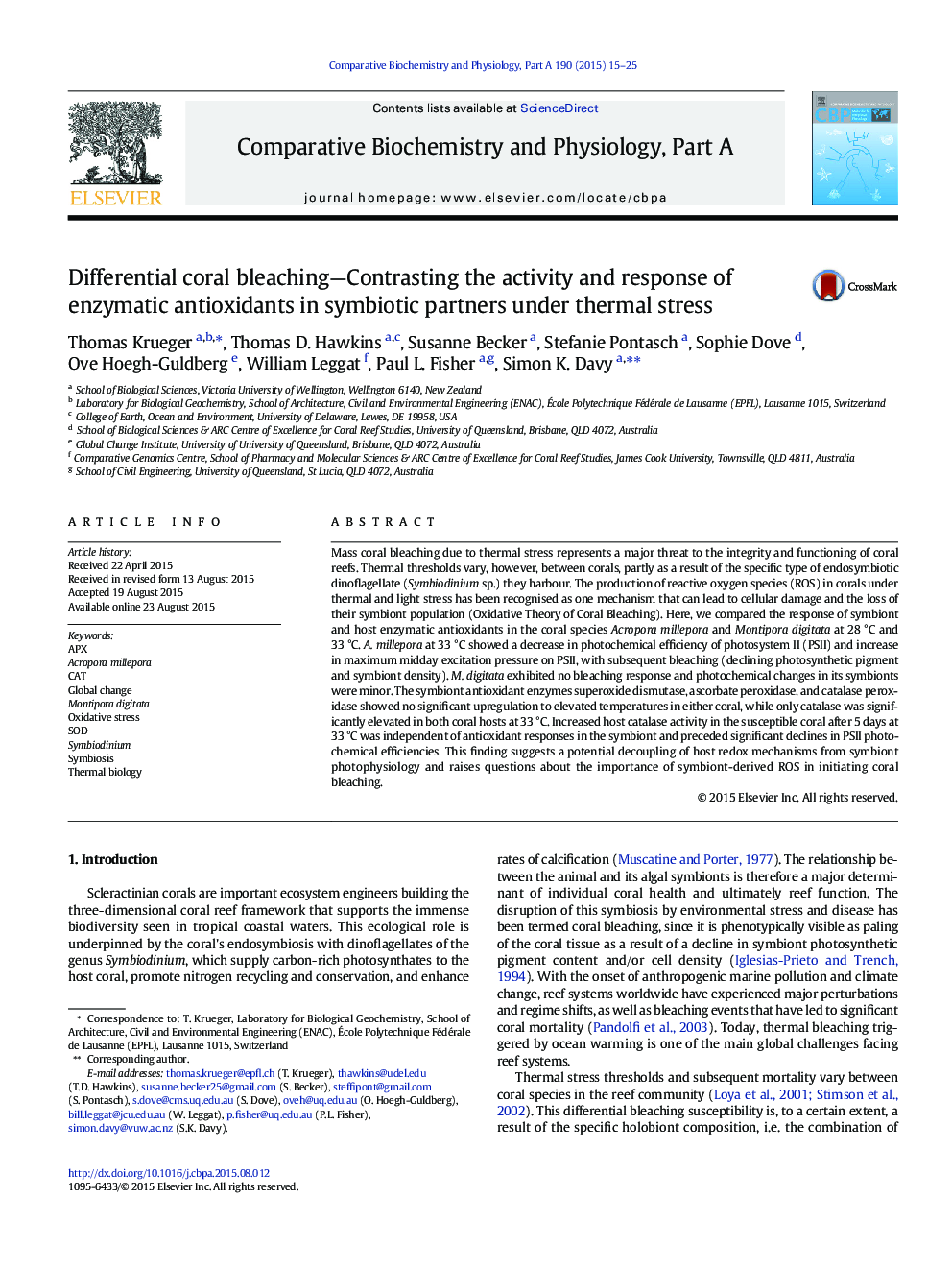| کد مقاله | کد نشریه | سال انتشار | مقاله انگلیسی | نسخه تمام متن |
|---|---|---|---|---|
| 1971886 | 1538997 | 2015 | 11 صفحه PDF | دانلود رایگان |
Mass coral bleaching due to thermal stress represents a major threat to the integrity and functioning of coral reefs. Thermal thresholds vary, however, between corals, partly as a result of the specific type of endosymbiotic dinoflagellate (Symbiodinium sp.) they harbour. The production of reactive oxygen species (ROS) in corals under thermal and light stress has been recognised as one mechanism that can lead to cellular damage and the loss of their symbiont population (Oxidative Theory of Coral Bleaching). Here, we compared the response of symbiont and host enzymatic antioxidants in the coral species Acropora millepora and Montipora digitata at 28 °C and 33 °C. A. millepora at 33 °C showed a decrease in photochemical efficiency of photosystem II (PSII) and increase in maximum midday excitation pressure on PSII, with subsequent bleaching (declining photosynthetic pigment and symbiont density). M. digitata exhibited no bleaching response and photochemical changes in its symbionts were minor. The symbiont antioxidant enzymes superoxide dismutase, ascorbate peroxidase, and catalase peroxidase showed no significant upregulation to elevated temperatures in either coral, while only catalase was significantly elevated in both coral hosts at 33 °C. Increased host catalase activity in the susceptible coral after 5 days at 33 °C was independent of antioxidant responses in the symbiont and preceded significant declines in PSII photochemical efficiencies. This finding suggests a potential decoupling of host redox mechanisms from symbiont photophysiology and raises questions about the importance of symbiont-derived ROS in initiating coral bleaching.
Journal: Comparative Biochemistry and Physiology Part A: Molecular & Integrative Physiology - Volume 190, December 2015, Pages 15–25
